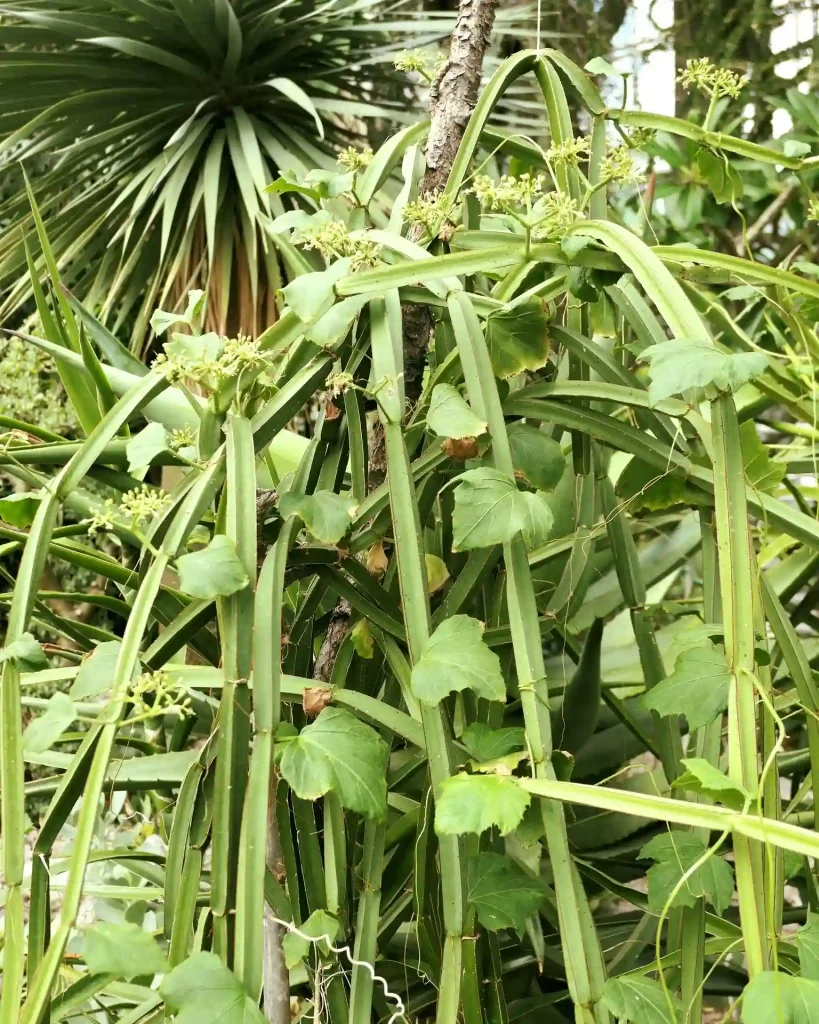My Fascination with the Musa Genus
As a botanist, I’ve always been drawn to the diversity and wonder of the plant kingdom. But there’s one genus that holds a special place in my heart: Musa. Perhaps it’s the sheer size of these plants, their vibrant green leaves unfurling like flags in the tropical breeze. Or maybe it’s the fact that they produce one of the world’s most beloved fruits – the banana. Whatever the reason, I find myself endlessly fascinated by these botanical giants.
Unpacking the Musa Genus
Musa is a genus of flowering plants in the Musaceae family. These plants are native to tropical regions of Africa, Asia, and Australia, and they’re known for their large, paddle-shaped leaves and fleshy, elongated fruits. While we often call them “banana trees,” they’re technically herbaceous plants. Their “trunk” is actually a pseudostem, formed by the tightly packed bases of their leaves. This pseudostem can reach heights of up to 20 feet, creating an imposing presence in the tropical landscape.
But it’s the fruit of the Musa genus that truly captures our attention. Bananas and plantains, staples in many diets worldwide, are packed with nutrients and energy. From the sweet Cavendish banana to the starchy plantain, there’s a Musa fruit to suit every palate.
A Diverse Family
The Musa genus is surprisingly diverse, with over 80 recognized species. Here are just a few examples:
- Musa acuminata: One of the ancestors of the modern banana, this species is native to Southeast Asia.
- Musa balbisiana: Another ancestor of the modern banana, this species is known for its starchy fruits.
- Musa basjoo: This cold-hardy species is native to Japan and is often grown as an ornamental plant.
- Musa textilis: This species, native to the Philippines, is the source of Abacá fiber, used in making ropes and textiles.
- Musa ornata: This ornamental species is prized for its showy pink bracts.
- Musa × alinsanaya R.V.Valmayor
- Musa arfakiana Argent
- Musa argentii Gogoi & Borah
- Musa arunachalensis A.Joe, Sreejith & M.Sabu
- Musa aurantiaca G.Mann ex Baker
- Musa azizii Häkkinen
- Musa banksii F.Muell.
- Musa barioensis Häkkinen
- Musa bauensis Häkkinen & Meekiong
- Musa beccarii N.W.Simmonds
- Musa boman Argent
- Musa borneensis Becc.
- Musa bukensis Argent
- Musa campestris Becc.
- Musa celebica Warb. ex K.Schum.
- Musa cheesmanii N.W.Simmonds
- Musa chunii Häkkinen
- Musa coccinea Andrews
- Musa corneri Holttum
- Musa cylindrica A.Joe, Sreejith & M.Sabu
- Musa exotica R.V.Valmayor
- Musa fitzalanii F.Muell.
- Musa flaviflora N.W.Simmonds
- Musa × formobisiana H.L.Chiu, C.T.Shii & T.Y.A.Yang
- Musa gracilis Holttum
- Musa griersonii Noltie
- Musa haekkinenii N.S.Lý & Haev.
- Musa hirta Becc.
- Musa indandamanensis L.J.Singh
- Musa ingens N.W.Simmonds
- Musa insularimontana Hayata
- Musa itinerans Cheesman
- Musa jackeyi W.Hill
- Musa johnsii Argent
- Musa juwiniana Meekiong, Ipor & Tawan
- Musa kamengensis Gogoi & Häkkinen
- Musa kattuvazhana K.C.Jacob
- Musa lanceolata Warb. ex K.Schum.
- Musa lawitiensis Nasution & Supard.
- Musa lokok Geri & Ng
- Musa lolodensis Cheesman
- Musa lutea R.V.Valmayor, D.D.Lê & Häkkinen
- Musa maclayi F.Muell. ex Mikl.-Maclay
- Musa mannii H.Wendl. ex Baker
- Musa markkuana (M.Sabu, A.Joe & Sreejith) Hareesh, A.Joe & M.Sabu
- Musa markkui Gogoi & Borah
- Musa monticola M.Hotta ex Argent
- Musa muluensis M.Hotta
- Musa nagalandiana S.Dey & Gogoi
- Musa nagensium Prain
- Musa nanensis Swangpol & Traiperm
- Musa ochracea K.Sheph.
- Musa paracoccinea A.Z.Liu & D.Z.Li
- Musa × paradisiaca L.
- Musa paramjitiana L.J.Singh
- Musa peekelii Lauterb.
- Musa puspanjaliae Gogoi & Häkkinen
- Musa rosea Baker
- Musa rubida Holttum
- Musa rubinea Häkkinen & C.H.Teo
- Musa rubra Wall. ex Kurz
- Musa ruiliensis W.N.Chen, Häkkinen & X.J.Ge
- Musa sakaiana Meekiong, Ipor & Tawan
- Musa salaccensis Zoll. ex Kurz
- Musa sanguinea Hook.f.
- Musa schizocarpa N.W.Simmonds
- Musa serpentina Swangpol & Somana
- Musa siamensis Häkkinen & Rich.H.Wallace
- Musa sikkimensis Kurz
- Musa splendida A.Chev.
- Musa thomsonii (King) A.M.Cowan & Cowan
- Musa tonkinensis R.V.Valmayor, D.D.Lê & Häkkinen
- Musa troglodytarum L.
- Musa tuberculata M.Hotta
- Musa velutina H.Wendl. & Drude
- Musa violascens Ridl.
- Musa viridis R.V.Valmayor, D.D.Lê & Häkkinen
- Musa voonii Häkkinen
- Musa yamiensis C.L.Yeh & J.H.Chen
- Musa yunnanensis Häkkinen & H.Wang
- Musa zaifui Häkkinen & H.Wang
Each species has its own unique characteristics, from the size and shape of its leaves to the flavor and texture of its fruit. This diversity is a testament to the adaptability of the Musa genus and its ability to thrive in a variety of environments.
More Than Just a Fruit
While the Musa genus is best known for its edible fruits, it also plays a vital role in many ecosystems. The large leaves provide shade and shelter for a variety of animals, while the flowers attract pollinators like birds and bats. In some cultures, the leaves are used for cooking, wrapping food, or even as plates. The pseudostems can be used for construction or as a source of fiber.
The Musa genus is also an important part of human history and culture. Bananas and plantains have been cultivated for thousands of years, and they’ve played a crucial role in the development of many civilizations. Today, they remain a staple food for millions of people around the world.
My Continued Exploration
My exploration of the Musa genus is an ongoing journey. I’m constantly amazed by the new discoveries I make about these fascinating plants. Whether I’m studying their genetic diversity, their ecological importance, or their cultural significance, I always find something new to appreciate.
The Musa genus is a testament to the beauty and complexity of the natural world. It’s a reminder that even the most familiar plants can hold hidden wonders, waiting to be discovered.
If i die, water my plants!



